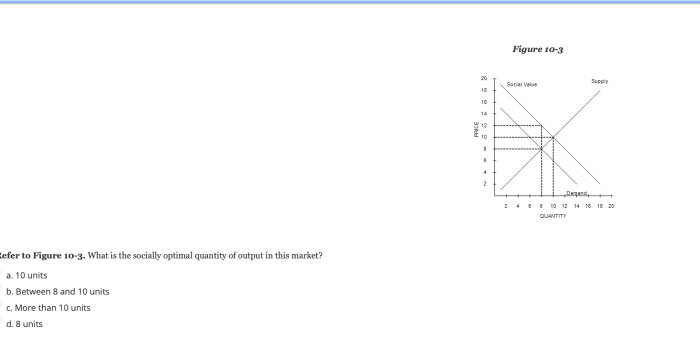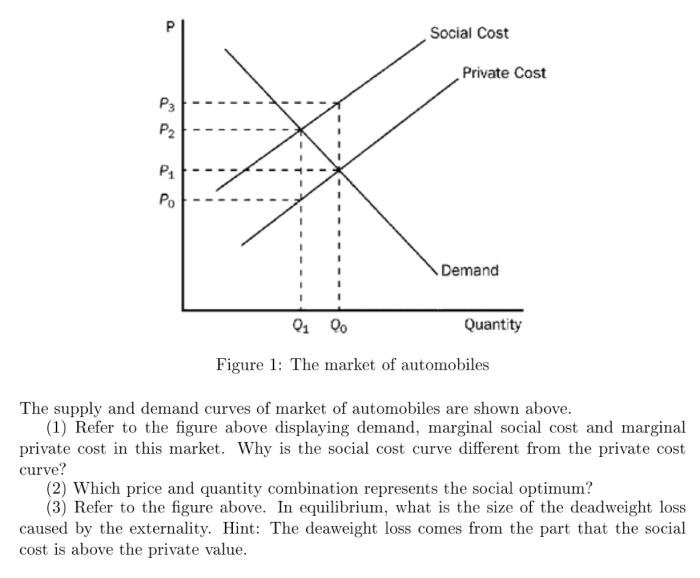Refer to figure 10-2. the socially optimal quantity would be – Refer to Figure 10-2: Determining the Socially Optimal Quantity. The socially optimal quantity is the level of output that maximizes the net benefit to society. It is determined by finding the point where the marginal cost of production equals the marginal benefit to society.
This concept is crucial for understanding market efficiency and government intervention. Market failures can lead to an inefficient allocation of resources, and government intervention can be necessary to correct these failures and promote social welfare.
Socially Optimal Quantity: Refer To Figure 10-2. The Socially Optimal Quantity Would Be

The socially optimal quantity is the output level that maximizes the net benefit to society. It is determined by the point where the marginal cost of production equals the marginal benefit to society.
For example, consider a market for a new drug. The marginal cost of producing one more unit of the drug is $10. The marginal benefit to society of one more unit of the drug is $20. The socially optimal quantity of the drug is 10 units.
Marginal Cost and Marginal Benefit, Refer to figure 10-2. the socially optimal quantity would be
The marginal cost of production is the cost of producing one more unit of output. The marginal benefit to society is the benefit that society receives from one more unit of output.
The socially optimal quantity is determined by the point where the marginal cost of production equals the marginal benefit to society. This point is shown graphically in the following figure:

The socially optimal quantity is Q*. At this point, the marginal cost of production equals the marginal benefit to society.
Market Failure
Market failure occurs when the market does not allocate resources efficiently. This can happen for a variety of reasons, including:
- Externalities
- Public goods
- Natural monopolies
- Information asymmetries
Government intervention can be used to correct market failure and improve resource allocation.
Externalities
An externality is a cost or benefit that is imposed on a third party as a result of an economic activity. Externalities can be positive or negative.
For example, pollution is a negative externality. When a factory pollutes the air, it imposes a cost on society in the form of health problems and environmental damage. This cost is not reflected in the price of the factory’s products.
Government intervention can be used to correct externalities and improve resource allocation. For example, the government can impose a tax on pollution to make polluters pay for the costs that they impose on society.
FAQ Overview
What is the socially optimal quantity?
The socially optimal quantity is the level of output that maximizes the net benefit to society.
How is the socially optimal quantity determined?
The socially optimal quantity is determined by finding the point where the marginal cost of production equals the marginal benefit to society.
What are some examples of market failures that can lead to an inefficient allocation of resources?
Some examples of market failures that can lead to an inefficient allocation of resources include monopolies, externalities, and public goods.

